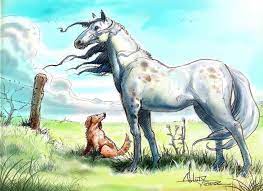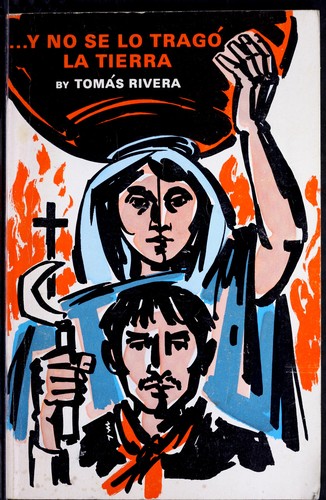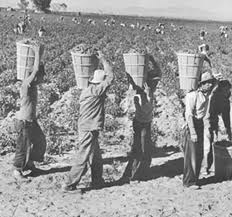Unit 8 Overview: Escritores contemporáneos de Estados Unidos y España
4 min read•june 18, 2024
Sylvia Rodriguez
AP Spanish Literature 💃🏽
24 resourcesSee Units
Unit 8 of AP Spanish Lit, Escritores contemporáneos de Estados Unidos y España, focuses on contemporary writers from the United States and Spain. The unit explores a range of literary genres, including novels, short stories, and essays, and highlights the diversity of perspectives and experiences represented in contemporary literature.
Some of the themes explored in this unit include the search for identity, the relationship between individuals and their communities, the impact of social and political issues on personal experience, and the role of language and communication in shaping individual and collective identities.
Overview of Unit 8
Unit 8 of AP Spanish Literature covers contemporary writers from Spain and the United States. Overall, it offers a glimpse into the contemporary literary scene in the Spanish-speaking world and encourages readers to engage with the issues and themes that are relevant to modern society.
The works in this unit explore themes such as identity, cultural heritage, social justice, immigration, and the human experience. Many of the writers, such as Tomás Rivera and Sabine Ulibarrí, focus on the experiences of marginalized communities, particularly Mexican-Americans living in the United States. Their works reflect the struggles and triumphs of these communities, highlighting issues such as poverty, racism, and immigration.
Required Works
These are just quick overviews. You can find more in-depth study guides at the links below!
8.1 “Mi caballo mago” – Sabine Ulibarrí

Image Courtesy of ThingLink
The short story "Mi caballo mago" was written by Mexican-American author Sabine Ulibarr. The narrative centers on Ramón, a young child who develops in a rural farming community. Ramón has a close relationship with a wild horse that he lovingly refers to as "Mi caballo mago" (My Magic Horse). Freedom, the bond between people and animals, and the transformational potential of imagination are all topics that are explored throughout the narrative. Ulibarr creates a picture of rural life and the tenacity of the human spirit through vivid descriptions and emotive language.
Temas to Look Out For
- Las relaciones interpersonales
- El amor y el desprecio
- La construcción de la realidad
- La trayectoria y la transformación
- La naturaleza y el ambiente
8.2 ...y no se lo tragó la tierra: “...y no se lo tragó la tierra” – Tomás Rivera

Image Courtesy of Open Library
Summary
Tomás Rivera is the author of the book ...y no se lo tragó la tierra. The book is made up of a number of connected short stories that illustrate the difficult circumstances and experiences of migrant Mexican-American workers in the country. The hardships, prejudice, and exploitation experienced by Mexican migrant workers while they toil in the fields are the main themes in the story titled, "...y no se lo tragó la tierra" (And the Earth Did Not Devour Him). The writing of Rivera provides a moving and accurate depiction of their life, highlighting their fortitude, resiliency, and enduring spirit in the face of hardship.
Temas to Look Out For
- El tiempo y el espacio
- La naturaleza y el ambiente
- Las relaciones familiares
- La espiritualidad y la religión
- La tradición y la ruptura
8.3 ...y no se lo tragó la tierra: “La noche buena” – Tomás Rivera

Image Courtesy of Weebly
Summary
The book ...y no se lo tragó la tierra by Tomás Rivera contains the story "La noche buena" as well. Roberto, a young boy, and his father go to "La noche buena," or Christmas Eve party, in their small rural Mexican-American village. This is the main character of the story. Rivera tackles ideas of family, community, cultural traditions, and the enduring value of connection and love via Roberto's point of view. The narrative does a wonderful job of capturing the holiday spirit and the importance of shared happy and family times.
Temas to Look Out For
- Las sociedades en contacto
- Las divisiones socioeconómicas
- La asimilación y la marginación
- La tradición y la ruptura
- Las relaciones familiares
8.4 “Como la vida misma” – Rosa Montero

Image Courtesy of Genius
Rosa Montero, a Spanish author, wrote the short story "Como la vida misma" (Just Like Real Life). The story explores the fragility of life and the complexity of interpersonal connections. Ana, a middle-aged woman reflects on her past experiences and the different events that have affected her life. She is the main character in the story. Themes of love, grief, regret, and the transient essence of life are woven into Montero's narrative. The novel encourages readers to reflect on the profound and unpredictable nature of life's journey through introspective narration.
Temas
- La dualidad del ser
- El individuo y la comunidad
- El tiempo y el espacio
- El individuo en su entorno
Throughout this unit, students will analyze the works in their historical, social, and cultural contexts, considering the ways in which each author grapples with issues of identity, community, and communication. Students will also consider the ways in which these themes resonate with their own experiences and the experiences of individuals and communities in the United States and Spain today.
Browse Study Guides By Unit
🏇Unit 1 – La época medieval
🛳Unit 2 – El siglo XVI
🖌Unit 3 – El siglo XVII
🎨Unit 4 – La literatura romántica, realista y naturalista
🤺Unit 5 – La Generación del 98 y el Modernismo
🎭Unit 6 – Teatro y poesía del siglo XX
🌎Unit 7 – El Boom latinoamericano
🗣Unit 8 – Escritores contemporáneos de Estados Unidos, y España

Fiveable
Resources
© 2025 Fiveable Inc. All rights reserved.